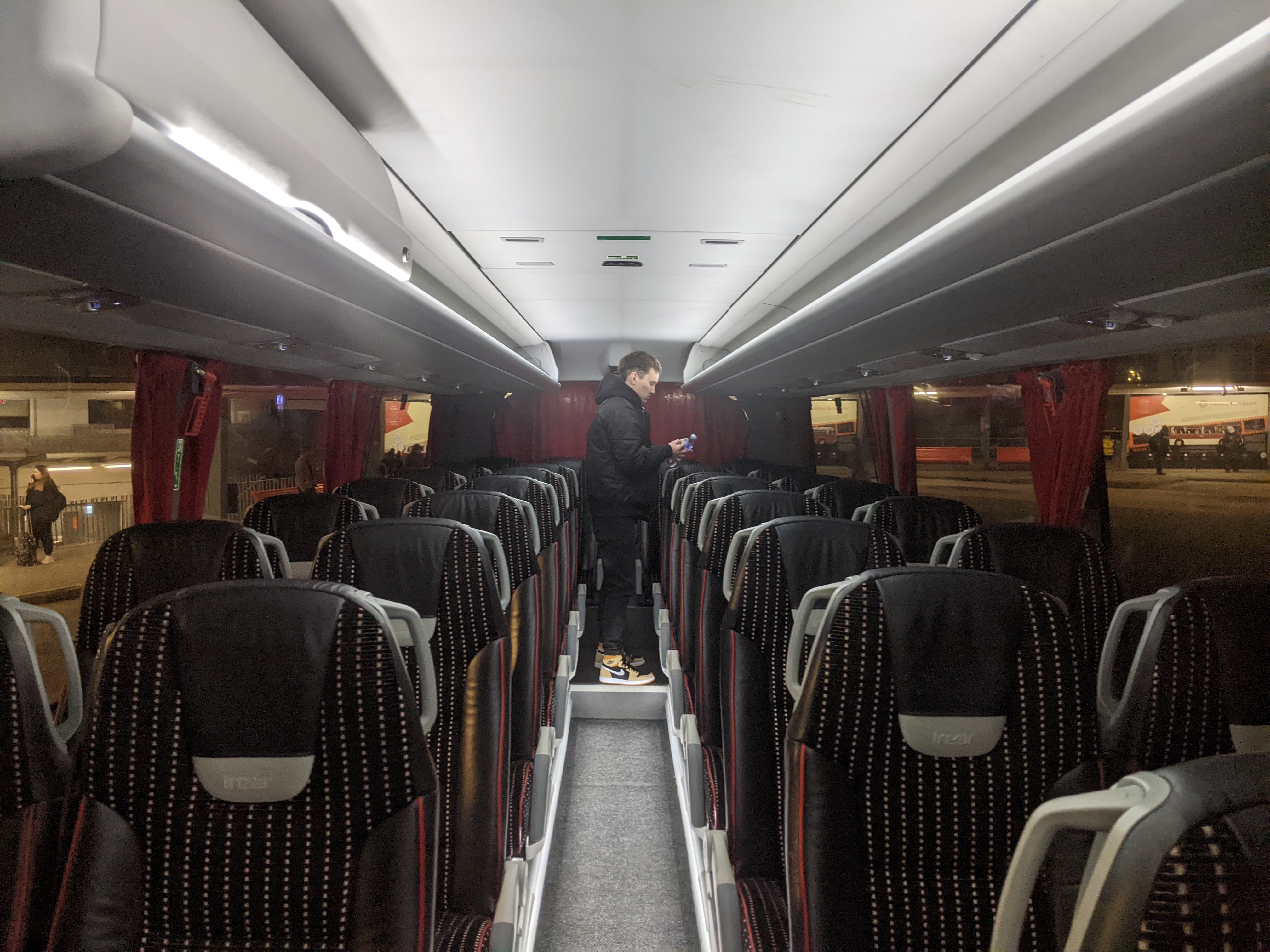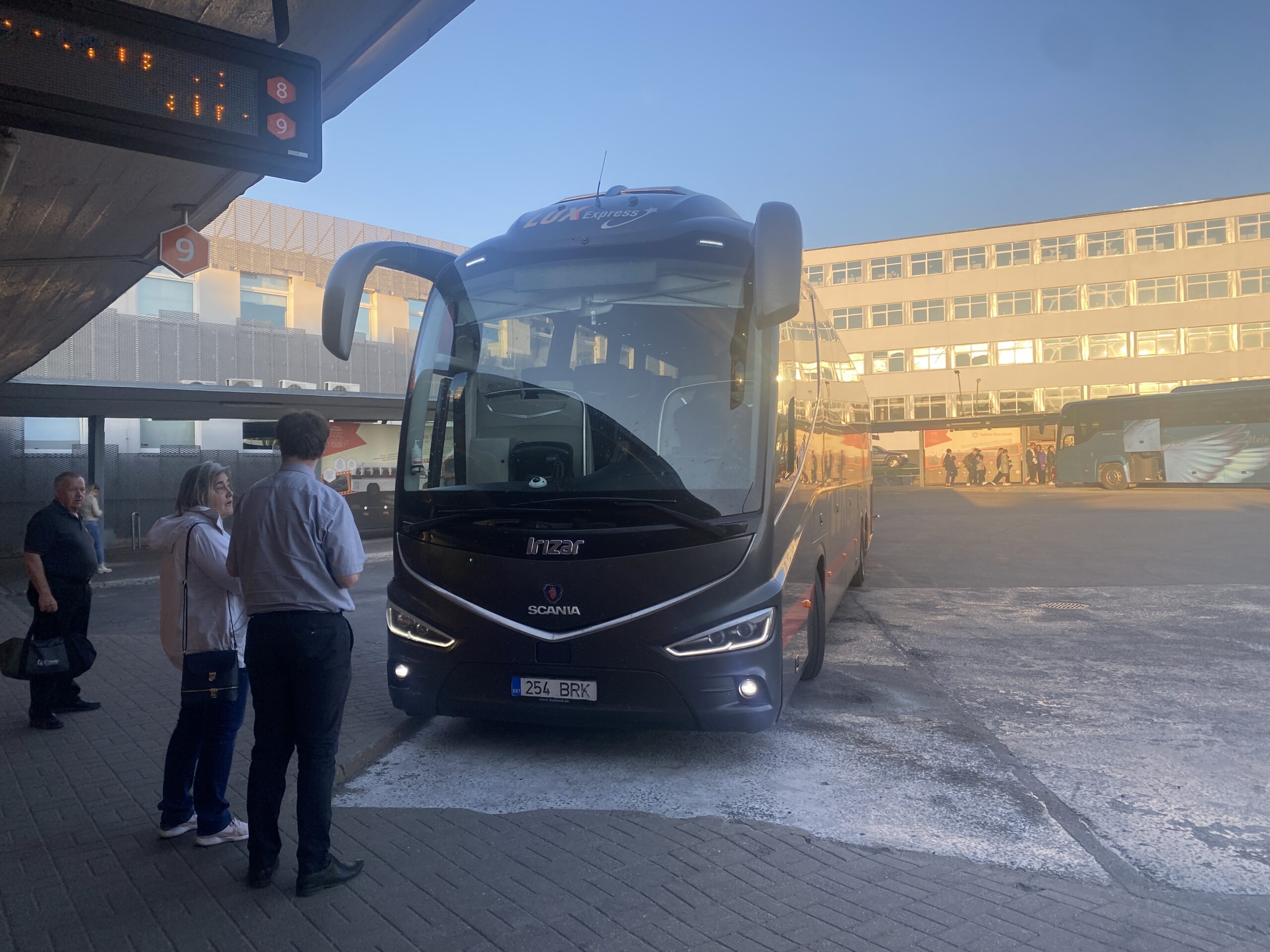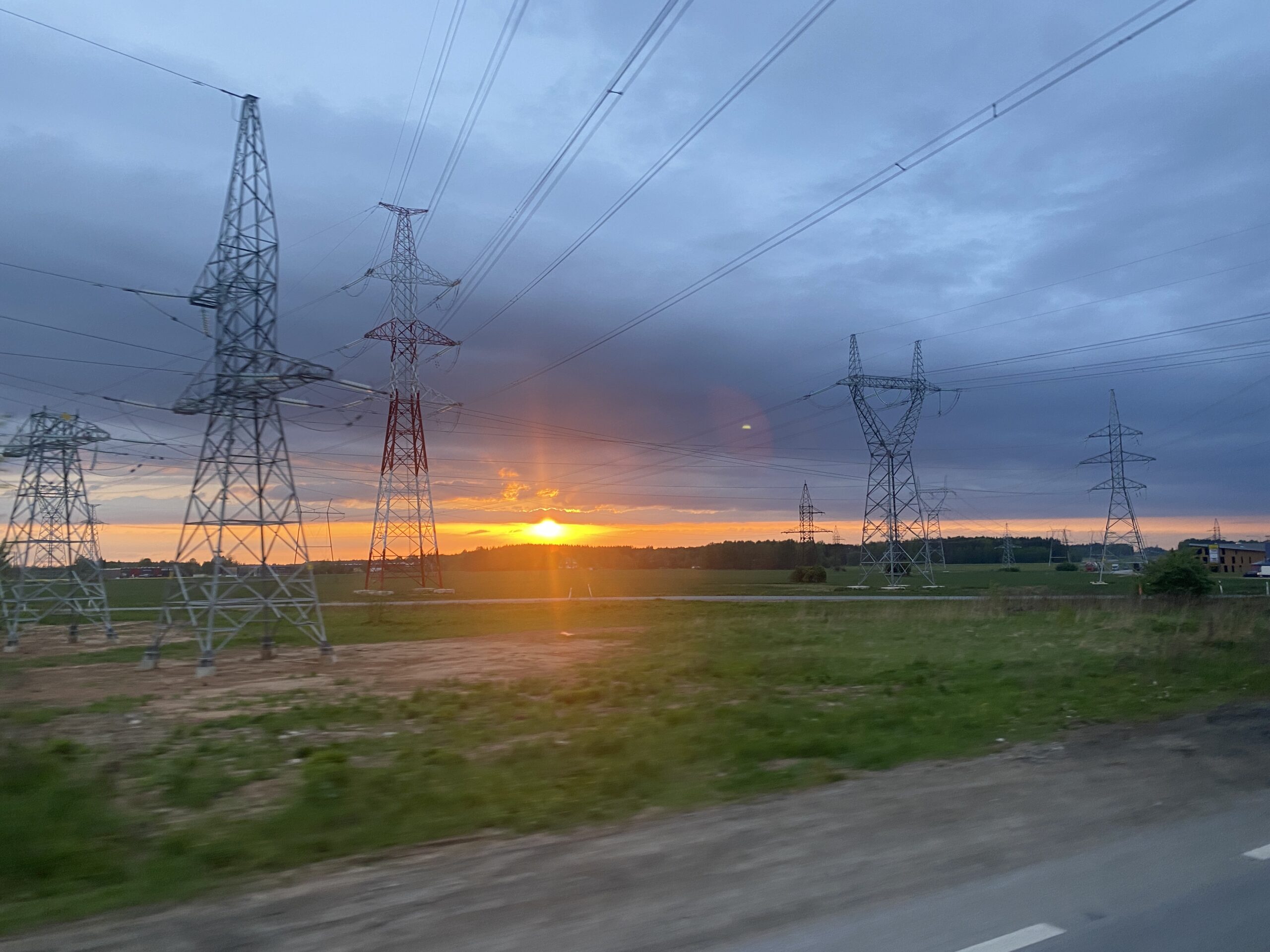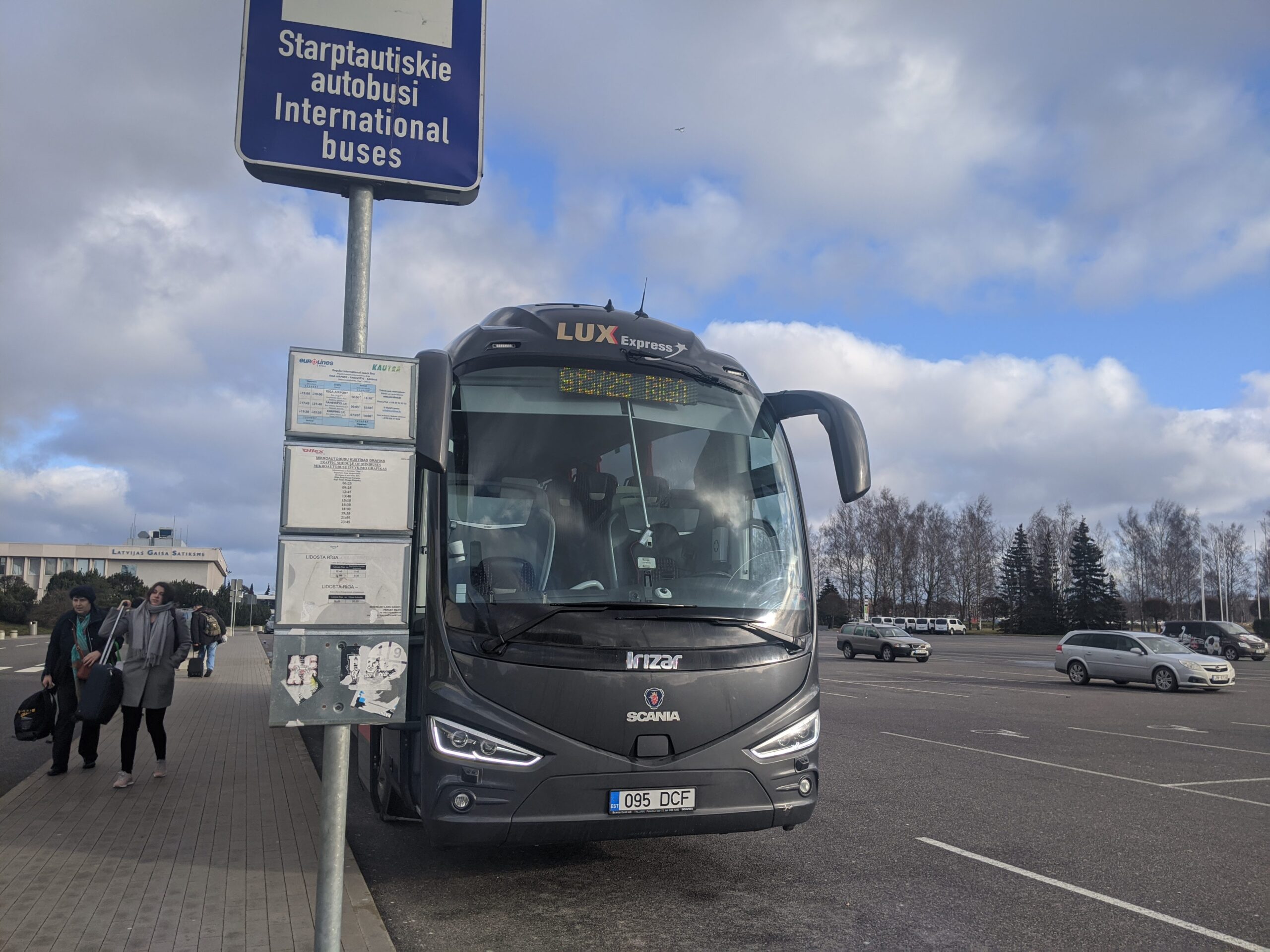Going back south, my series of blog posts will continue with Lux Express: the most reliable and top-quality coach service, or at least so they claim. They are a coach operator based in Tallinn operating all across the Baltics, as well as Poland, Russia, and Finland. They started operations in 1992, but grew their operations substantially in the early 2010s. Today they have a fleet of 88 coaches and a network covering the capitals and other major cities in the countries they operate in.
Vehicles
How Lux Express differentiates themselves from other coach operators is by the coaches themselves: Irizar i8 and i6 coaches with an interior design focused on passenger comfort. Irizar is a coach builder based in Spain, the variants that Lux Express use are built on top of chassis by Scania of Sweden. Seating is of a standard 2+2 configuration, but with very comfortably padded seats with ample legroom, plus an entertainment screen and a power socket per seat pair. The coaches are 15 m long and in general seat around 50 passengers. i6 coaches have a single-class interior, whereas the i8 fleet features Lounge, a sort of business class offering at the back of the bus, with a 2+1 configuration of even cushier and larger seats. All coaches also have a coffee machine on board, free for all passengers, as well as a toilet and Wi-Fi. All combined, this leads to a rather premier travel experience not usually found on coaches, making them very competitive against trains.


Routes
The route network is extensive with both international and domestic Estonian routes. Some notable routes are Tallinn-Tartu, with departures twice every hour, more frequent than trains, most with Lounge buses; Tallinn-Riga every 2 hours with some exceptions and one extending south to Vilnius; Tallinn-St. Petersburg, still operating despite Russian aggression; and Vilnius-Warsaw via Kaunas. In general though, Lux Express focuses on providing service between major cities, either competing against trains or serving links that in a more civilised nation would have trains, such as Tallinn-Pärnu and Riga-Vilnius. Departures generally follow a consistent schedule. Departure times are either at the hour or half hour from origin stations and the frequencies remain consistent throughout the day. More attention is also now being given to late night service, especially between Tallinn and Tartu: whereas the last northbound train leaves Tartu at 20:25, buses depart at 21:00 and 22:00 and the final southbound departure from Tallinn is at 23:30.
Initially I thought about describing the bus stations here as well, but since they are consistently unremarkable throughout the Baltics I decided not to: I have passed through many and not once have I found anything worthy of commenting. I will however mention Kaunas bus station, which was surprisingly nice and modern with plenty of amenities, including a Rimi grocery store.

Tickets
The easiest way to purchase tickets is through Lux Express’s official website: luxexpress.eu. It’s a modern, well-designed and functional website and is intuitive to use. Ticket sales open several months in advance, you can choose your seat, and for frequent travellers there is a loyalty programme with several advantages, such as 100% discount code for every 10 tickets bought. Another option is to buy through a reseller such as tpilet.ee, or to buy from the coach driver before departure, however as the routes are in high demand, seats are not guaranteed and the prices are higher. Tickets are delivered by e-mail in the form of a PDF, which may be printed out but electronic copies are also accepted.
In terms of prices, despite the name Lux Express, they’re in fact rather affordable. A standard fare between Tallinn and Tartu is around €12, and Tallinn to Riga around €20. Discounts are available, including 26% off for anyone under 26.
Passenger experience
As I did for my post on trains, I’ll describe the passenger experience on buses as well. When I lived in Tartu, Lux Express was my mode of choice for travelling outside the city: the bus station was within walking distance from my home and with Tartu Airport having very limited service, my main choices were Tallinn and Riga: both with direct airport links from Tartu by Lux Express. However, since I moved to Tallinn, for various reasons I have not been using Lux Express as much any more.
As I had late evening plans in Tartu one day and I would’ve missed the last train, I took the 21:00 Lux Express back up north that day. It leaves from Tartu coach station right in the centre of the city with several shopping centres nearby, yet a few kilometres from my base in Tartu: fortunately it was a downhill walk. I arrived at about 20:56: I don’t bother arriving early for coaches, since I have a reserved seat anyway there’s no advantage. I showed my QR code to the bus driver, who reminded me of my seat number and allowed me on board. If this were an international bus, I would have had to present ID at this stage as well. I sat down in seat 27: a window seat in the middle of the bus on the left hand side. It’s my preferred seat on i8 coaches, on i6 I go a few rows back to 33. I had found these to be the best seats more than 5 years ago, I can’t remember the reasons now.

